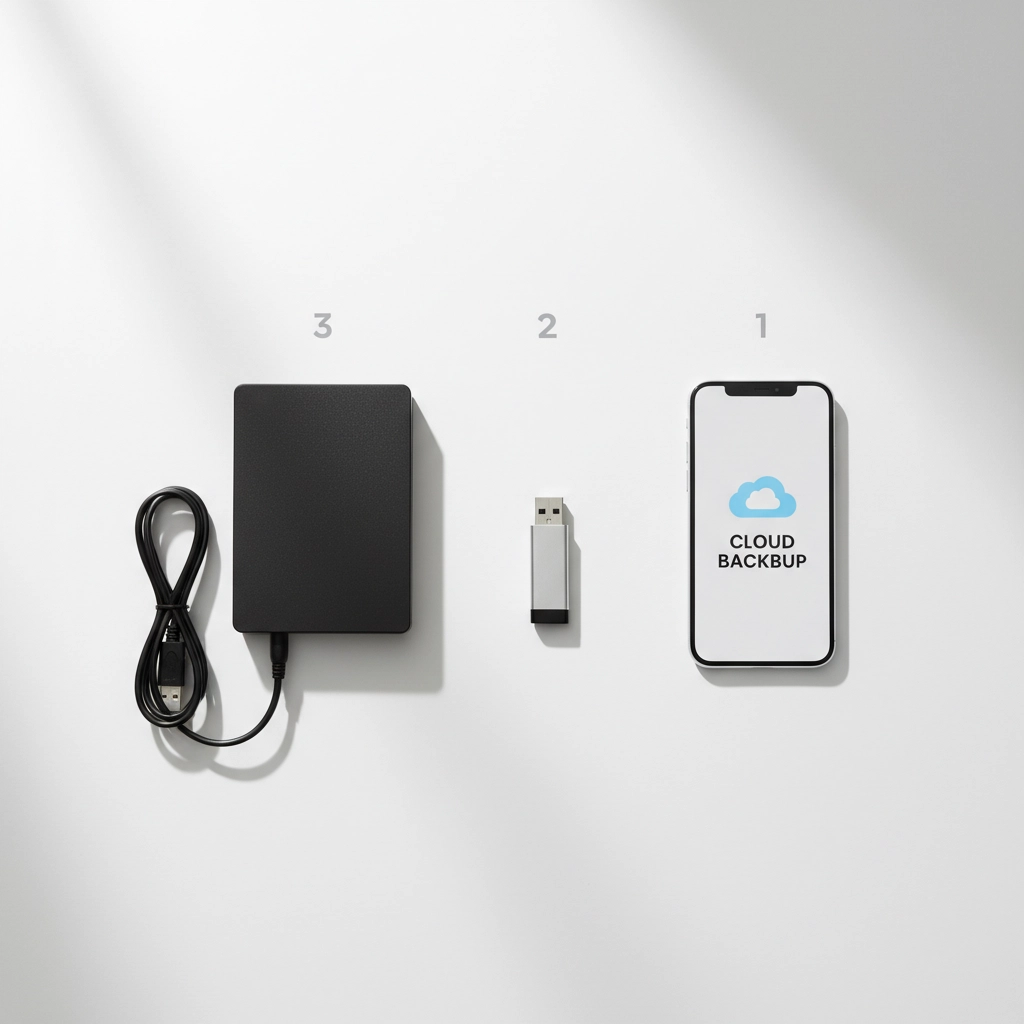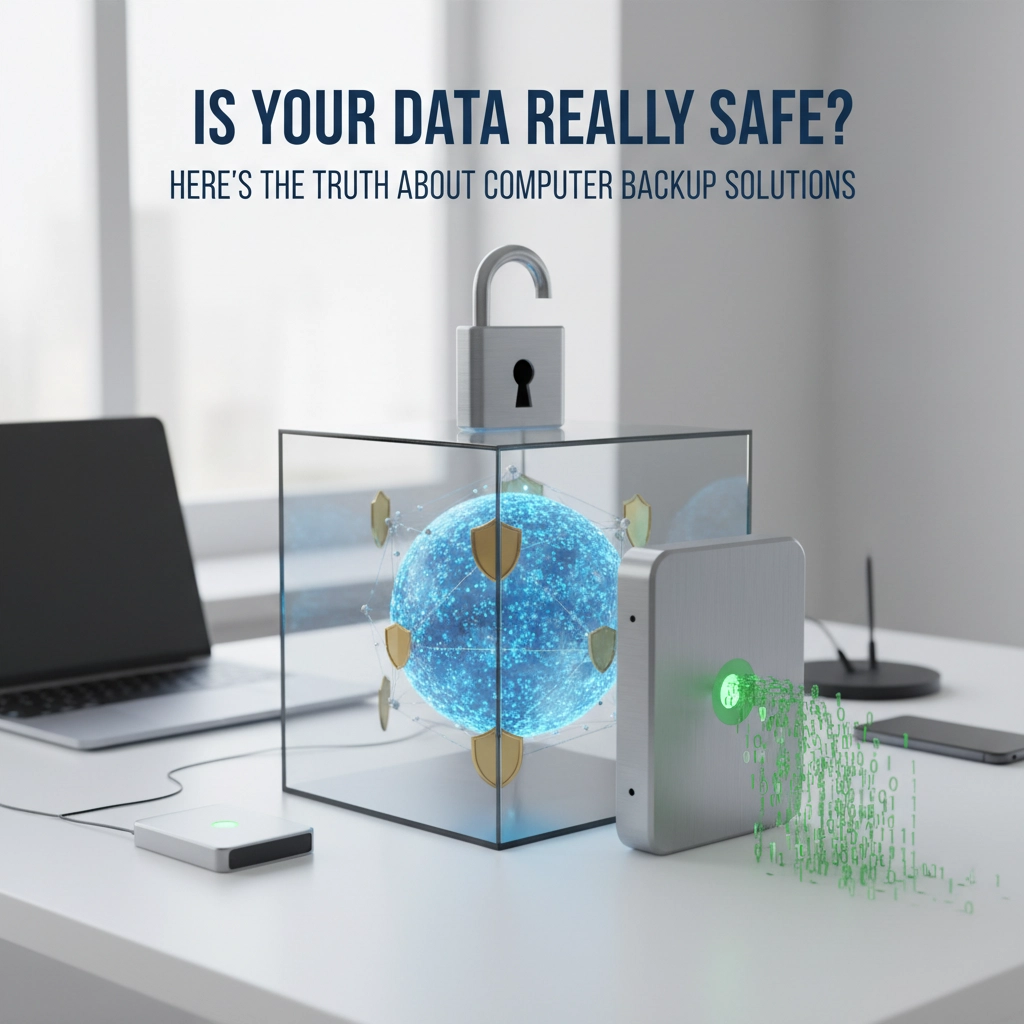Let's be honest about something that keeps many business owners awake at night: your data is probably not as safe as you think it is. We see it every day at Preferred Computer Solutions: clients who thought their information was protected until disaster struck. The truth about computer backup solutions might surprise you, but understanding it could save your business.
The Harsh Reality Most People Ignore
Your computer will fail. It's not a matter of if, but when. Hard drives have moving parts that wear out. Solid-state drives have limited write cycles. Even the most expensive equipment eventually breaks down. Yet many people operate their businesses as if their computer will last forever.
We've witnessed countless situations where a single hardware failure wiped out years of customer records, financial data, and irreplaceable photos. The emotional toll on our clients is heartbreaking: especially when we have to deliver the news that their data is gone forever.
Ransomware attacks make this situation even more critical. These malicious programs encrypt your files and demand payment for the key to unlock them. In February 2023 alone, cybercriminals launched 240 ransomware attacks: a staggering 45% increase from the previous month. Your business could be next, and paying the ransom doesn't guarantee you'll get your data back.

Why Most Backup Solutions Fail When You Need Them Most
Here's what we've learned from years of helping clients recover from data disasters: most people have backups that don't actually work. They assume their automatic backup software is protecting them, but they've never tested it. When disaster strikes, they discover their backup files are corrupted, incomplete, or stored in a format they can't access.
Cloud storage adds another layer of complexity. While services like Google Drive or Dropbox seem convenient, they're not true backup solutions. These sync services can actually make problems worse: if ransomware encrypts your local files, it can sync those encrypted files to your cloud storage, destroying your online copies too.
Many cloud providers also have security vulnerabilities. Data breaches happen regularly, potentially exposing your sensitive business information to cybercriminals. Personal identification documents, financial records, and proprietary business data stored in the cloud face constant threats from hackers, weak passwords, and phishing scams.
The Three Types of Data Loss That Destroy Businesses
Hardware Failures: Hard drives crash without warning. Power surges fry motherboards. Laptops get dropped or stolen. These physical problems account for the majority of data loss incidents we see.
Human Error: Accidental deletions happen more often than you'd expect. Someone empties the recycle bin, formats the wrong drive, or saves over an important file. Even experienced users make costly mistakes.
Malicious Attacks: Beyond ransomware, viruses can corrupt files, and hackers can delete data remotely. Social engineering attacks trick employees into giving away access credentials, leading to intentional data destruction.

What Actually Makes Backup Solutions Work
Effective backup solutions follow the 3-2-1 rule: keep three copies of your important data, store them on two different types of media, and maintain one copy offsite. This might sound complicated, but it's the minimum standard for real protection.
Your backup system must run automatically. Manual backups fail because people forget to do them consistently. Set up automated daily backups that don't require human intervention. The best solutions can discover and protect new files without additional configuration.
Encryption is non-negotiable. Your backup files should be encrypted both during transmission and while stored. If someone gains access to your backup media, encryption renders the data useless without the proper keys.
Air-gapped backups provide the ultimate protection against ransomware. These are backup copies that exist completely separate from your network: on external drives stored offsite or in secure cloud storage that ransomware can't reach through your internet connection.
The Testing Secret Most People Never Learn
Creating backups is only half the battle. Testing them regularly is what separates real protection from false security. We recommend our clients perform monthly restoration tests. Pick random files from your backup and restore them to a different location. Compare them to the originals to verify they're identical and accessible.
For complete system backups, test the entire restoration process at least quarterly. Try restoring your backup to a different computer or virtual machine. Can you boot from it? Do all your programs work? Are your settings preserved? This testing reveals problems before you desperately need your backup to work.
Document your testing results and keep restoration procedures written down in a place separate from your computer. During a real emergency, stress and time pressure make it easy to forget important steps.

Local vs. Cloud: Finding the Right Balance
Neither purely local nor purely cloud-based backup is sufficient alone. Local backups provide fast restoration and complete control over your data. You can recover files in minutes instead of hours. But local backups are vulnerable to fire, flood, theft, and other disasters that affect your physical location.
Cloud backups protect against local disasters but introduce new risks. Internet outages can prevent access to your data when you need it most. Large file restorations can take days over slow internet connections. Monthly fees add up over time, and you're dependent on the cloud provider's business stability.
The most reliable approach combines both methods. Keep recent backups locally for quick access to frequently needed files. Maintain additional copies in reputable cloud services for disaster recovery. This hybrid approach provides the benefits of both while minimizing the weaknesses of each.
Red Flags That Your Current Backup Isn't Protecting You
Your backup solution is inadequate if you can't remember the last time you tested a restoration. If your backup software hasn't prompted you to verify its operation recently, it's probably not working properly.
Warning signs include backup jobs that consistently fail or skip files, backups that haven't increased in size despite adding new data, and backup software you haven't updated in months. These problems compound over time, leaving you with increasingly unreliable protection.
If you're relying solely on file synchronization services like Dropbox or OneDrive as your backup strategy, you're not actually protected against many common data loss scenarios. These services have their place, but they're not comprehensive backup solutions.
Taking Action: Your Next Steps
Start by auditing your current backup situation honestly. When did you last successfully restore a file from backup? How long would it take to get your business running again if your computer died right now? If these questions make you uncomfortable, it's time to implement a real backup strategy.
Consider professional backup solutions that offer automated testing, multiple storage locations, and guaranteed recovery times. While these services cost more than basic consumer backup software, they're significantly less expensive than losing years of business data.
Don't wait until after disaster strikes to discover your backup strategy has gaps. We've seen too many businesses learn this lesson the hard way. The best time to implement proper backup protection is right now, while your data is still safe and accessible.
At Preferred Computer Solutions, we work one-on-one with our clients to design backup strategies that actually protect their specific needs. We don't just install software and walk away: we test your backups, train your team, and provide ongoing support to ensure your data stays protected.
Your business data is irreplaceable. Don't gamble with backup solutions that might work. Contact us today to discuss a backup strategy that will actually be there when you need it most. Visit our website or call us to schedule a consultation. Your future self will thank you for taking action now.



Recent Comments